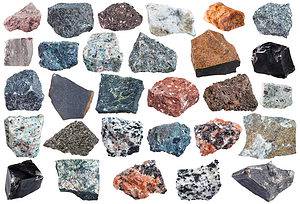What’s the first spot you thought of when you wondered the location of the largest rock in the world? Was it Australia? If so, you’d be right! However, it’s pretty likely you have the wrong rock in mind. Let’s take a look and see what we can learn about the world’s biggest rock, what its name is, and where you might find it.
What is the Largest Rock in the World?
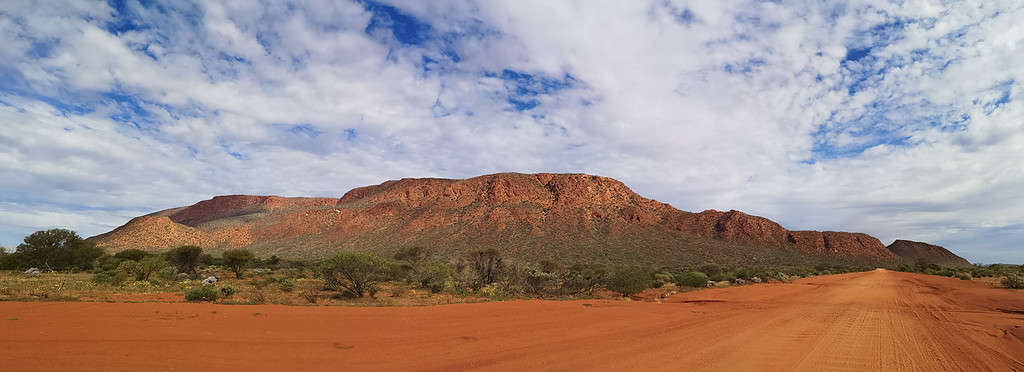
Meet Mount Augustus. Another giant red rock in the middle of the Australian Outback. This big red rock, though, is about two and a half times the size of the red rock you probably thought of when you wondered if Uluru is the largest rock in the world.
©Samantha Haebich/ via Getty Images
When you thought about the world’s biggest rock, you likely went straight to the world-famous Uluru, or the “big red rock” in the middle of the Australian Outback. While this breathtaking monolith is pretty darn big, Mount Augustus actually outdoes Uluru by two and half times its size. Officially, Mount Augustus is the largest rock in the world. And yes, you really can see this giant beast of a from all around, up to nearly 100 miles away. Folks from all over the world come out to visit this massive rock and enjoy the incredible beauty of the intriguing terrain, wildlife, and National Park all around.
How Big is the Largest Rock in the World?
Mount Augustus is about two and a half times the size of Uluru, the more famous big rock in Australia. The giant Mount Augustus covers, roughly 11,860 acres of land. The giant rock reaches over 2,350 feet into the sky and its central ridge runs for 5 miles long. The massive rock truly deserves the title of the world’s largest rock. The hiking trail leading up to the rock isn’t as long as the rock is itself.
Where is the Largest Rock in the World Located?
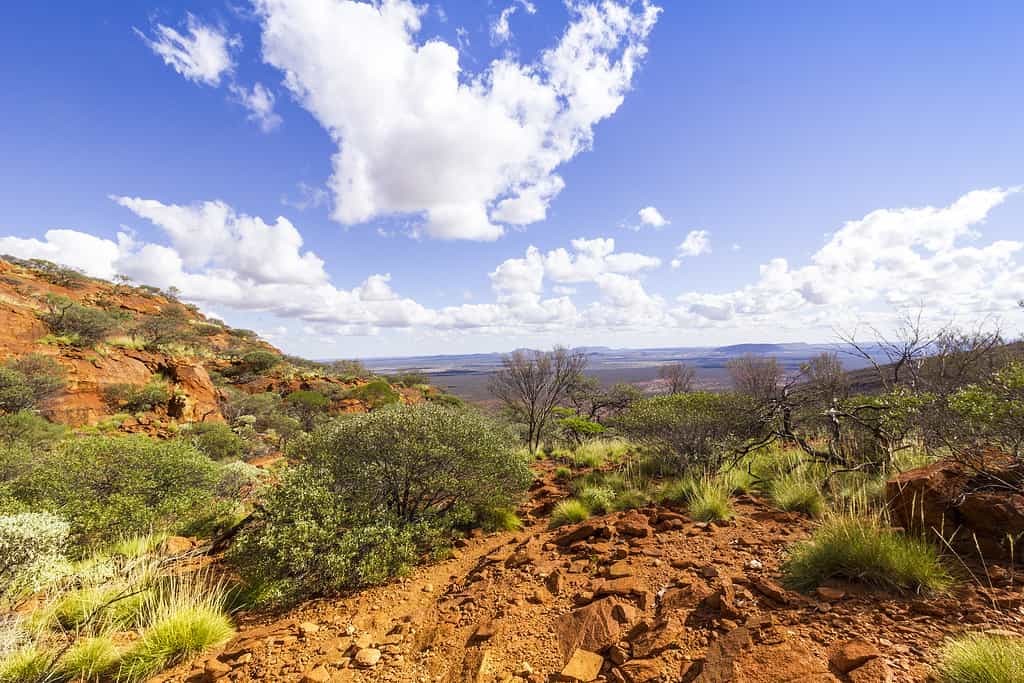
The giant red rock known as Mount Augustus, rests about 620 miles from Perth, the most isolated capital city in the world. Apparently, Western Australia likes its claims to the world’s most and biggest.
©JoshuaWells_Photography/ via Getty Images
Roughly 621 miles north of Perth, the beautiful Mount Augustus rests in Western Australia. The giant rock nestles within the boundaries of Mount Augustus National Park. The massive inselberg, or giant, isolated rock, rests at 3,629 feet above sea level, some 2,820 feet above the surrounding plain. The nearest town is Meekatharra.
Basic Facts About Mount Augustus
Some interesting facts about Mount Augustus:
- The largest rock in the world, Mount Augustus, rises to a height of 2,350 feet or 717 meters.
- The central ridge of Mount Augustus runs for 5 miles.
- Belief holds Mount Augustus to be around 1.65 billion years old.
- The Indigenous name for the rock comes from the Wadjari (or Wajarri) people, “Burringurrah”. Burringurrah is the name of the young man whom the rock is named for in Dreamtime stories.
- The English name for Mount Augustus comes from honoring Sir Charles Gregory, the first non-Indigenous person known to climb the rock.
What Lives Around Mount Augustus?
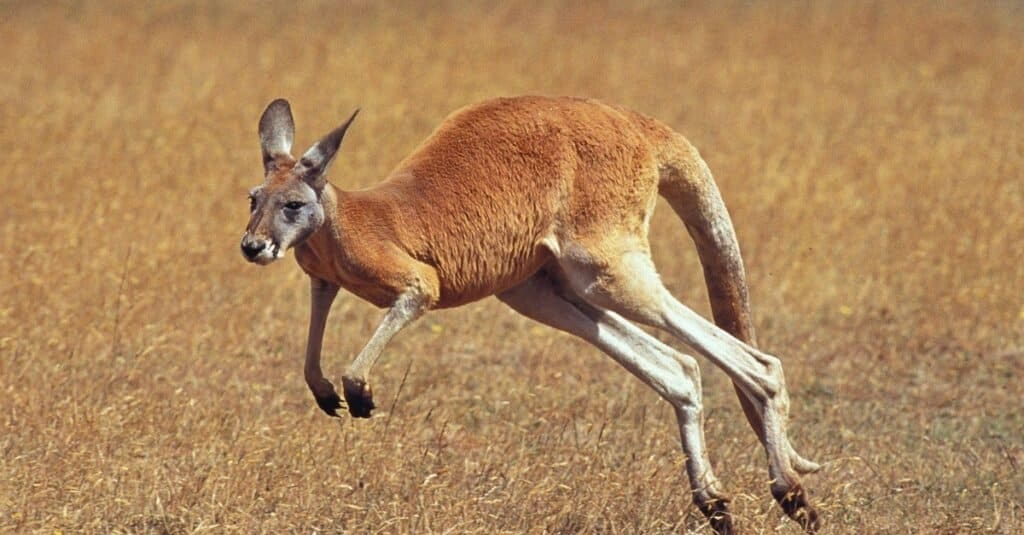
Red
kangaroos
, wallaroos, wallabies, emus, and many other intriguing critters live all around Mount Augustus. The spring-fed pool at the base keeps the wildlife nearby for healthy living.
©iStock.com/slowmotiongli
Despite being in the infamous desert lands of the Australian Outback, Mount Augustus and surrounds are home to many creatures and intriguing plants. Over 100 species of birds may be found here, including the national symbol, the emu. You could also spot galah birds, honeyeaters, and babblers. You might see goannas, red kangaroos, or hill wallaroos. Wallabies, black cormorants, black swans, ducks, corellas, blue-winged kookaburras, and many other birds and critters also make this area their home, thanks to the ever-present pool. They come to drink from the cool waters, bask in the shade of the rock, and flourish within the scattered plants surrounding the giant red rock.
Plants surrounding Mount Augustus include wattles, cassias, mulga, myall, gidgee, and white-barked river gums, to name a few.
Aboriginal History of Mount Augustus
Mount Augustus goes by a much more ancient name: Burringurrah. The Wajarri (Wadjari) name for the rock was given to this sacred place, the “runaway boy place.” Evidence of Aboriginal habitation at Mount Augustus dates centuries, if not millennia, with rock engravings surrounding the giant rock. Many Dreamtime stories of the Wajarri people also date back, revealed in these stories, in many locations around the rock, on the loop walking trail.
The natural springs at Mount Augustus drew the Aborigines of long ago with their water supply in times of drought. In times of plenty, however, the Wajarri people often roamed far away.
How To Enjoy the Largest Rock in the World?
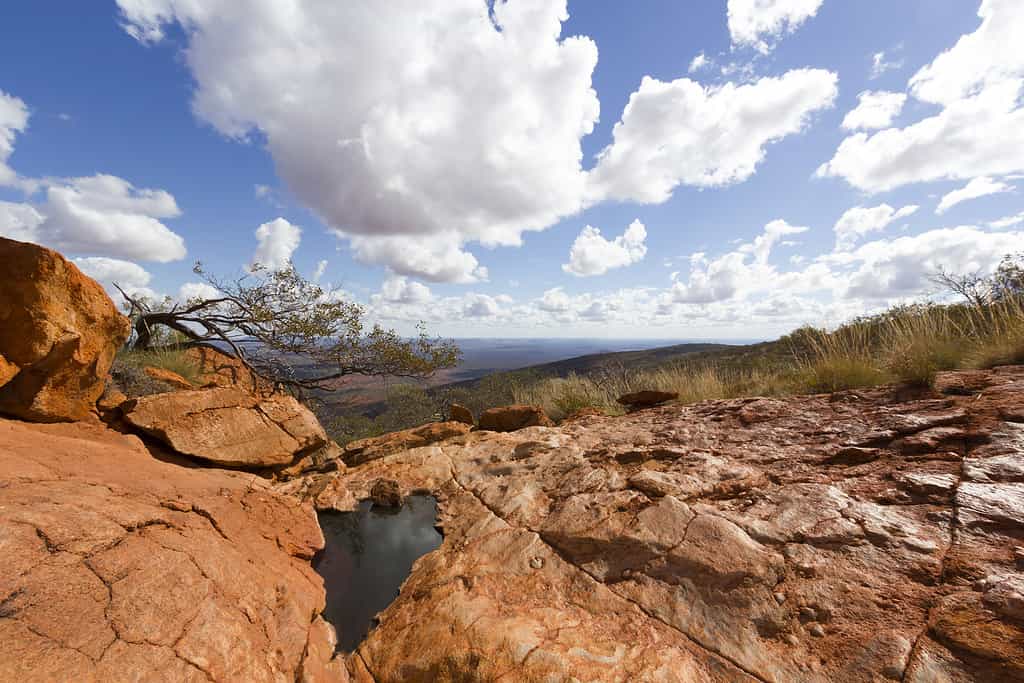
Many ways for enjoying Mount Augustus exist. Hike the rock, swim in the spring-fed pool, drive around the base, or enjoy a picnic with a significant view.
©JoshuaWells_Photography/ via Getty Images
Burroggurrah, or Mount August, may be enjoyed by folks of all fitness levels, as long as you’ve got a car. There are several ways folks opt to enjoy this massive rock, though, from driving the loop around, hiking the trails, lounging in the cattle pool below, or from a distance.
Drive Up to the Rock
Driving around the base of Mount Augustus is the perfect way to enjoy the world’s largest rock when you’re short on time or just don’t feel like hiking. The Mount Augustus Loop Drive takes about 45 minutes around the massive rock and terrain and provides incredible views of the rock and surrounding landscape.
For those looking for a longer trek, many take the nine-day road trip from Perth, leading through hinterlands, wildflowers, and station stays (ranches).
Hike Around Mount Augustus
Many folks opt to enjoy this big, glorious rock from hiking trails. Burringurrah, or Mount Augustus, offers a few intriguing nearby options and adventures. At the base of the rock, you’ll find Goordgeela, a small recreation area with trails running to a cave (Cave Hill Trail) and area where you can see the Lyons River, the rock, and enjoy other exploration. Other trails include Saddle Trail with views into The Pound and the river and Summit Trail.
Unlike Uluru, Mount Augustus may be climbed, even leading folks to bring their gear for a unique adventure in the Outback. For those looking to enjoy a good, long hike, the Mount Augustus Summit Trail provides a six- to eight-hour trek, leading up the rock face, scrambling along the peaks, and incredible 360-degree views. This trek, of course, should only be tackled by those in highly fit condition. But other hiking trails allow for great views, even if not climbing experiences.
Enjoy the View From the Cattle Pool
If you’re up for a hike and swim, Cattle Pool (Goolinee) offers an incredible view of Mount Augustus. In fact, many folks choose this option for a natural way to cool off after hiking in the area. Many folks bring floats in their backpacks and inflate them for a chill relaxation moment after getting to the giant rock. Fed by a freshwater creek, Cattle Pool bathes Mount Augustus in refreshing cool water, while waving gumtrees dance in the breeze all around.
Enjoy Nature’s Light Show from Emu Lookout
If you want a spectacular nature light show, grab a picnic blanket and dine on your favorite treats at sunset. The incredible lightshow of colors from Emu Lookout gazing at Mount Augustus won’t leave you disappointed. The lookout offers specific angles for viewing the massive rock and, at that time of day, the rock actually resembles the more famous Uluru (Ayers Rock). Fiery ochre, vermillion, pink, mauve — all the incredible colors are present for the show.
The photo featured at the top of this post is © Samantha Haebich/ via Getty Images
Thank you for reading! Have some feedback for us? Contact the AZ Animals editorial team.





